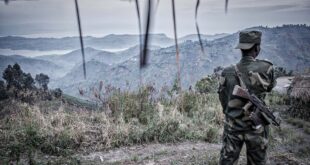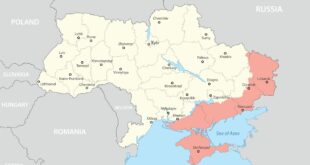Eng. Saleem Al Batayneh
The concept of “anxiety” has long permeated the Arabic dictionary through the works of existentialists such as Albert Camus, Heidegger, and Sartre. However, the word has often been mistranslated and misunderstood. This is not our focus today. Instead, we turn our attention to the unique form of anxiety present in Jordan, a nation that fears impending changes to the political landscape of the entire region and the redistribution of roles among its countries.
Anyone who lives in Jordan understands the meaning of fear, a word that has not received the attention it deserves and is seldom used to grasp the underlying realities. As the situation becomes more ambiguous, we witness an increasing number of countries recognizing the Palestinian state based on the two-state solution principle, envisioning a Palestinian state alongside Israel.
But what are the two countries? Where is each located on the political map of the world?
We are well aware of one—Israel. But where is the other country that is often mentioned and recognized? Is it west of the river within the borders of June 4, 1967, or east of the river?
This silence is not an absence of speech but perhaps a presence of silence. The question “Where are you going?” has evolved into “What is happening and what is being prepared for?” These are questions that demand clear answers. Even if answers are available, they are open to all possibilities within the context of Zionist strategies towards Jordan. Jordan is experiencing a critical phase, facing the threat of displacing the people of the West Bank and establishing an alternative homeland for Palestinians in Jordan. This threatens to disrupt the balance between Jordanians and Palestinians and the relationship between the king and the people, potentially dismantling Jordanian legitimacy and the state itself in response to Zionist ambitions.
Israel aims for its war in Gaza to conclude with a major strategic shift that impacts the entire region, achieving gains that would make the establishment of a Palestinian state between the river and the sea impossible. This would undermine Israel’s security theory and prevent the evacuation of over 300,000 settlers from West Bank settlements. Additionally, it would deprive Israel of its strategic depth and violate the religious and spiritual privacy of the Jewish people.
We find ourselves outside time and space, blinded by political realities that have not been seen for a century. What we currently observe and hear is merely the tip of the iceberg. We must face the facts as they are, without denial, and treat the alternative homeland conspiracy as an imminent reality, acknowledging that Israel remains our primary adversary.
Jordanians are often captivated by past events and what the future might bring. The fear lies in the juxtaposition of beginnings and the reality of endings. The idea of Jordan as an alternative homeland is not new. Its inclusion in the map of Greater Israel is an old concept, and weakening Jordan and its governance is part of a Zionist-American-Western plan to establish a Palestinian state in Jordan. Months ago, Israeli Finance Minister Bezalel Smotrich presented a map of Israel that included Jordan during a celebration in Paris. This was followed by statements from former head of the Israeli National Security Council, General Giora Eiland, who suggested that the developments in Jordan were preliminary steps to ending the Hashemite Kingdom and making Jordan the final settlement for a Palestinian state east of the river, with population blocks from the west.
Article Eight of the Wadi Araba Treaty publicly endorsed linking the solution to settlement, indicating that the countries receiving Palestinians would not only accept them but also facilitate their integration, preventing any resistance against Israel.
Legitimate fears and a flood of questions now occupy our minds. If the West Bank were annexed and its residents displaced, what role would remain for Jordan? Jordan must be wary of adverse international and regional changes and their sudden repercussions. Historically, Jordan relied on regional balances to maintain its security and survival. The fear is that the term “New Jordan,” mentioned by former American ambassador to Jordan, Henry T. Wooster, in 2020, might soon become a reality.
The West Bank, as it stands today, appears more Jewish than Palestinian. Over a year ago, I wrote an article for Rai Al-Youm Al-Gharaa newspaper, highlighting the Jewish National Fund’s efforts to buy real estate and land in the West Bank’s Area A and Area B, which account for 39% of the West Bank’s area. Area C, under Israel’s security control, makes up 61% of the West Bank, and Israel claims there are no ownership contracts for this area, maintaining it as princely lands since 1967.
The future is fraught with challenges, and Jordan is amid a crisis of political uncertainty sweeping the region. This stage calls for unified messages directed to the people and a balanced media discourse characterized by logic and credibility. The relationship between Jordan and Palestine is deeply rooted, and attempts to sever this bond could ignite a fire that would affect everyone.
Eng. Al Batayneh was a member of the Jordanian Parliament.
 Geostrategic Media Political Commentary, Analysis, Security, Defense
Geostrategic Media Political Commentary, Analysis, Security, Defense





